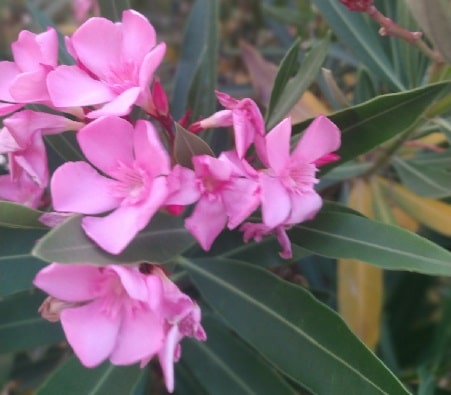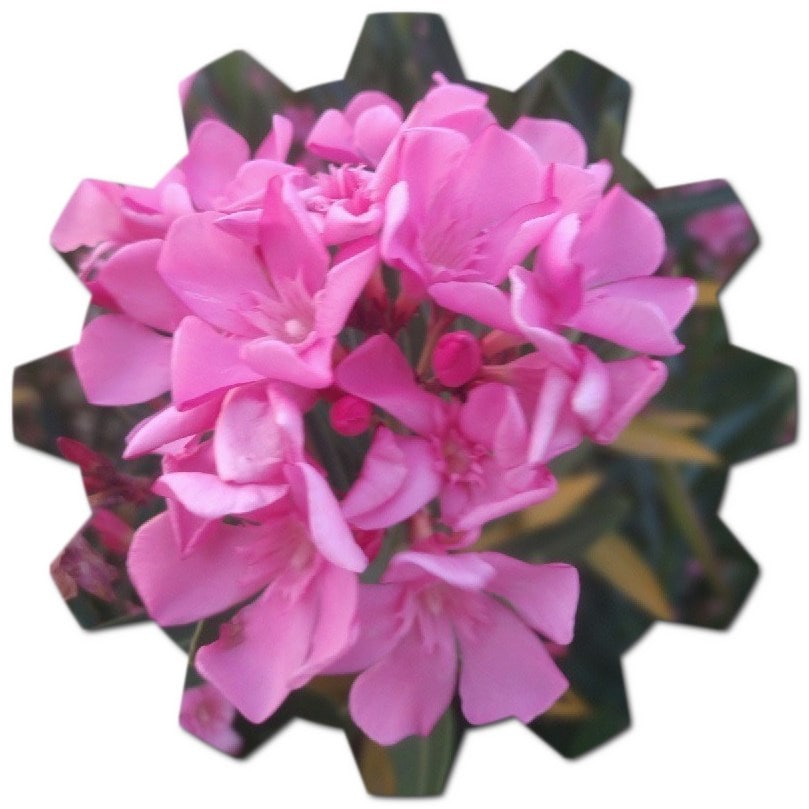Yes, oleanders (Nerium oleander) do grow in Italy. Oleanders are widely cultivated and commonly found in various regions of Italy, especially in the southern and coastal areas with a Mediterranean climate. They are well-suited to the warm and sunny conditions of the Mediterranean region, making them a popular choice for gardens, parks, and landscapes.
Oleanders are known for their vibrant and showy flowers, which can come in various colors, including shades of white, pink, red, and yellow. Their ability to tolerate salty air and soil makes them suitable for coastal areas, and they can often be seen decorating the roadsides and gardens along the Italian coastline.

However, it is essential to note that while oleanders are beautiful and hardy plants, all parts of the plant are toxic if ingested, so caution should be exercised, especially around children and pets. Nonetheless, their attractive appearance and ability to thrive in the Mediterranean climate make them a popular ornamental plant in Italy and many other Mediterranean countries.
Where do oleander flowers grow well in Italy?
Oleander flowers (Nerium oleander) grow well in various regions of Italy, particularly in areas with a Mediterranean climate. The Mediterranean climate is characterized by hot, dry summers and mild, wet winters, which creates the ideal conditions for oleanders to thrive. Some specific regions in Italy where oleander flowers grow well include:

- Southern Italy: Regions like Sicily, Calabria, Apulia, and Campania have a Mediterranean climate and are well-suited for oleander cultivation. Oleanders are commonly seen along roadsides, in parks, and in gardens in these areas.
- Coastal Areas: Oleanders are particularly well-adapted to coastal regions due to their ability to tolerate salty air and soil. Cities and towns along the Italian coastline, such as the Amalfi Coast, Cinque Terre, and the Italian Riviera, often feature oleanders as part of their coastal landscapes.
- Islands: The Mediterranean islands of Italy, such as Sardinia and Sicily, provide excellent conditions for oleanders to flourish. These islands’ coastal locations and Mediterranean climates make them ideal habitats for this resilient plant.
- Central Italy: Parts of Central Italy, including Tuscany and Lazio, also have a Mediterranean climate and can support the growth of oleander flowers.
Oleanders are versatile plants that can tolerate a range of soil types, including sandy and poor soils. They are drought-tolerant once established and can withstand hot and dry conditions. However, they may require some protection from severe frosts, especially in northern regions of Italy where the winters can be colder.
In many of these regions, oleanders are not only grown in private gardens but are also used for public landscaping, adding vibrant color to parks, streets, and public spaces. However, as beautiful as oleanders are, it’s essential to remember that all parts of the plant are toxic if ingested, so care should be taken, especially in areas where children and pets may come into contact with them. Italy Pink Oleander Flower >>
When does the oleander tree bloom in Italy?
The oleander (Nerium oleander) typically blooms in Italy during the summer months, starting from late spring and continuing through early autumn. The exact timing of the blooming period can vary depending on the specific location within Italy and the prevailing weather conditions.
In general, oleanders in Italy tend to start producing their first flowers in late spring, typically in May or June. The flowering season reaches its peak during the summer months, from June to August. During this period, oleanders display their beautiful and colorful blooms, which can be found in various shades of white, pink, red, and yellow.
The blooming duration can be extended in regions with milder climates or in areas with well-maintained and irrigated plants. However, oleanders are known for their ability to withstand drought conditions, and they can still produce flowers even during hot and dry summers.
It’s worth noting that the blooming period of oleanders may be affected by factors such as local microclimates, the health and age of the plants, and the amount of sunlight and water they receive. If you plan to visit Italy during the summer, you are likely to encounter the delightful sight of oleanders in full bloom, adding vibrant colors to the landscapes and enhancing the beauty of gardens, parks, and coastal areas.
Where Is Oleander Flower Used?
The oleander flower (Nerium oleander) is used for ornamental purposes and landscaping in many regions around the world. Here are some common uses of the oleander flower:
- Gardens and Landscaping: Oleander plants are popular choices for gardens and landscaping due to their vibrant and showy flowers. The flowers come in various colors, including white, pink, red, and yellow, making them visually striking additions to outdoor spaces.
- Parks and Public Spaces: Oleanders are often used for public landscaping in parks, along roadsides, and in other public spaces. Their ability to thrive in hot and dry conditions makes them suitable for beautifying urban areas with minimal water requirements.
- Coastal Plantings: Oleanders are well-adapted to coastal areas and can tolerate salty air and soil. As a result, they are commonly planted along coastlines, adding a splash of color to beachfronts and waterfront properties.
- Hedges and Privacy Screens: Due to their dense growth and ability to be pruned, oleander plants are used to create hedges and privacy screens in gardens and landscapes.
- Containers and Pots: Oleanders can be grown in large containers or pots, making them versatile for use on patios, balconies, and other outdoor spaces where planting in the ground may not be practical.
It’s important to note that while oleander flowers are attractive and add aesthetic value to landscapes, all parts of the oleander plant are toxic if ingested. Therefore, caution should be exercised, especially in areas accessible to children and pets. Proper care and handling are essential to enjoy the beauty of oleander while minimizing potential risks associated with its toxicity. Oleander trees in Italy >>
Given the toxicity of oleander, it’s advisable to be knowledgeable about its properties and safe handling practices. If you plan to use oleander in any setting, it’s essential to educate yourself on the plant’s characteristics and follow appropriate safety precautions. If you have concerns or questions about oleander’s use, consulting local gardening experts or horticulturists is recommended.
Is Oleander a Dangerous Flower?
Yes, oleander (Nerium oleander) is considered a dangerous flower and plant due to its high level of toxicity. All parts of the oleander plant, including the flowers, leaves, stems, and sap, contain toxic compounds known as cardiac glycosides. These cardiac glycosides can have serious effects on the heart and other organs if ingested or even if there is significant skin contact.
The toxicity of oleander can pose significant risks to humans and animals. Ingestion of any part of the plant can lead to symptoms such as nausea, vomiting, diarrhea, abdominal pain, and irregular heart rhythms. In severe cases, ingestion of oleander can result in life-threatening conditions, including cardiac arrhythmias and even death.
It’s essential to handle oleander with care, especially in areas where children and pets may be present. Keep oleander plants out of reach and be cautious when working with them, as even small amounts of ingestion or contact can cause harm.
If there is any suspicion of oleander poisoning, seek immediate medical attention. Do not attempt to use oleander for medicinal purposes or for any other purpose that involves ingestion or contact with the plant without proper knowledge and guidance from experts.
Due to its toxicity, oleander is not recommended for use in areas frequented by children, pets, or livestock. If you choose to have oleander in your garden or landscape, take appropriate safety precautions, and consider educating those around you about the potential dangers associated with this plant.
